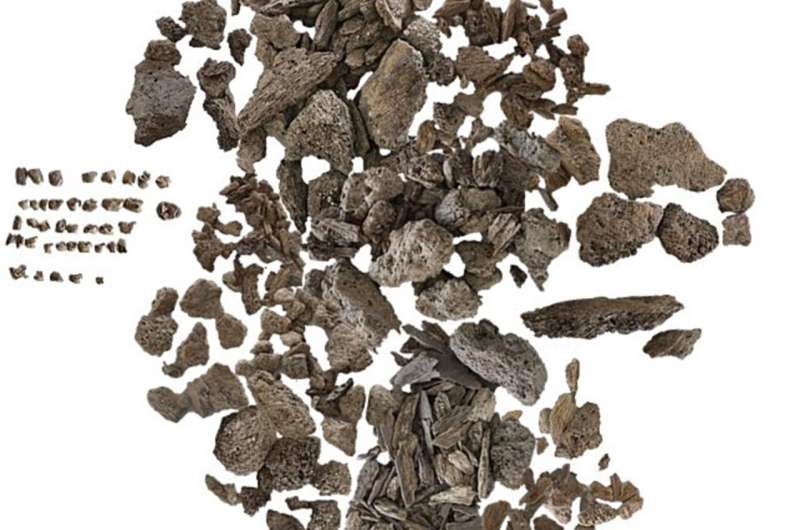August 1, 2023 report
This article has been reviewed according to Science X's editorial process and policies. Editors have highlighted the following attributes while ensuring the content's credibility:
fact-checked
trusted source
proofread
Mystery Iron Age warrior buried on small island off the coast of England determined to be female

A team of archaeologists and historians from multiple institutions in the U.K. and the U.S. has found evidence that an Iron Age warrior whose remains were found in a grave on the island of Bryher, off the coast of England, was likely female. In their study, reported in the Journal of Archaeological Science: Reports, the group analyzed tooth enamel found in the grave.
In 1999, a farmer working on the island came across what turned out to be an ancient grave site. After officials were alerted, the site was excavated and researchers determined that a person of unknown origin, who had lived during the Iron Age, was buried there. The skeleton was too decomposed to offer many clues as to who it might have been, or even its gender. Finding both a sword and a mirror in the grave made things even more confusing—typically, swords were buried with male warriors and mirrors were buried with women.
In this new effort, the research team took a new approach to learning more about the interred body. Prior attempts to extract DNA from bone fragments were unsuccessful. This time, the team used tooth enamel and found that it was well enough preserved to allow for conclusive results—the warrior buried in the grave was female. The researchers were able to determine this because some proteins in tooth enamel vary by gender.
Finding that the warrior buried on Bryher was female adds credence to theories that suggest many more women were engaged in combat during the Iron Age than previously thought. It also calls into question gender roles during the period.
Some of the items found in the grave, such as a spiral ring and a copper alloy brooch, suggest that the female warrior was held in high esteem in her community, giving her high status. That suggests she was not a simple foot soldier, but a warrior playing a commanding role in the fighting. It also hints at the possibility that such women warriors were common during the Iron Age, at least in parts of Britain.
More information: S. Mays et al, Sex identification of a Late Iron Age sword and mirror cist burial from Hillside Farm, Bryher, Isles of Scilly, England, Journal of Archaeological Science: Reports (2023). DOI: 10.1016/j.jasrep.2023.104099
© 2023 Science X Network




















